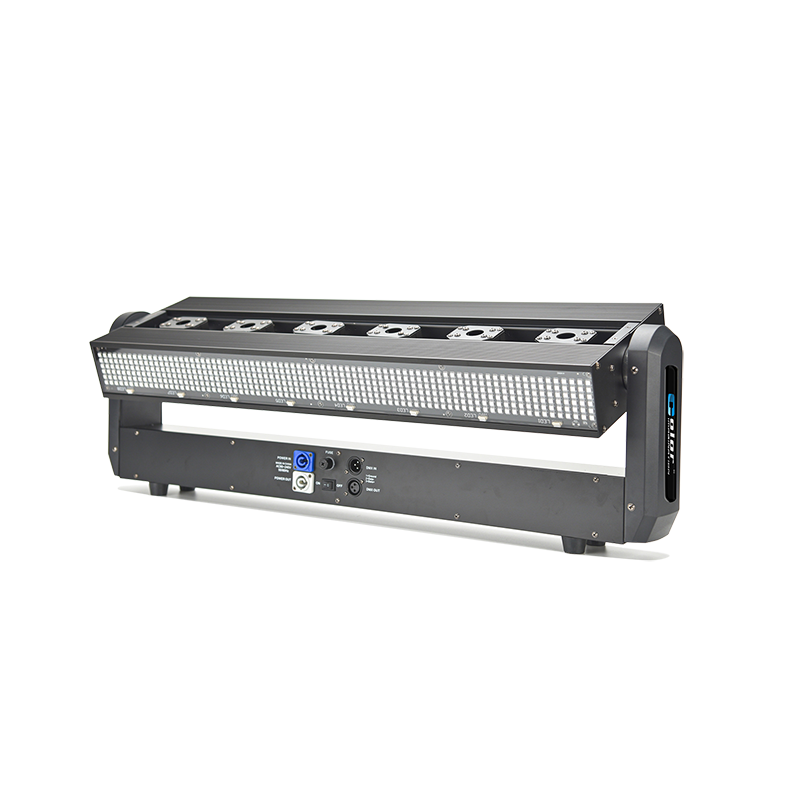Mastering the Beam: How to Use Laser Moving Head Lights Effectively
Mastering the use of laser moving head lights can take your lighting design to the next level, creating stunning visual effects and enhancing the overall atmosphere of your live performances. These versatile lights are capable of producing intense, focused beams of light that can be used to highlight performers, create dynamic patterns, and add depth and texture to your lighting design. In this guide, we will explore some tips and techniques for using laser moving head lights effectively.
1. Understand the Basics
Before you start using laser moving head lights, it's important to understand the basic principles behind their operation. This includes understanding how the light is produced, how the moving head functions, and how to control the light using a lighting console. Familiarize yourself with the different components of the light, including the laser diode, optical system, and control system.
2. Plan Your Design
Like any lighting design, using laser moving head lights effectively requires careful planning. Start by determining the overall look and feel you want to achieve, taking into account the mood of the performance and the needs of the performers. Consider how the laser moving head lights will complement other lighting elements, such as conventional fixtures and LED lights.
3. Consider Safety
Laser moving head lights can produce intense beams of light that can be potentially hazardous if not used properly. It's important to follow safety guidelines when using these lights, including ensuring that the beams are not aimed directly at the audience or performers. Use safety mechanisms, such as beam shutters and safety zones, to prevent accidental exposure to the laser light.
4. Experiment with Movement
One of the key advantages of laser moving head lights is their ability to move and change direction. Experiment with different movement patterns, such as sweeping beams, rotating patterns, and pulsing effects, to create dynamic and engaging lighting effects. Use the pan and tilt functions of the moving head to direct the light where you want it and create interesting shapes and patterns on stage.
5. Use Colors Wisely
Laser moving head lights can produce a wide range of colors by using different types of lasers or by passing the light through colored filters. Use colors strategically to enhance the mood of the performance and create visual interest. Experiment with different color combinations and effects to find the perfect look for your design.
6. Combine with Other Lighting Elements
Laser moving head lights can be used effectively in combination with other lighting elements, such as conventional fixtures, LED lights, and video projections. Experiment with layering different types of light to create depth and texture in your lighting design. Use the laser moving head lights to highlight key moments or performers, while using other lights to fill in the background and create ambiance.
7. Sync with Music and Sound
To create a truly immersive experience, consider syncing your laser moving head lights with the music and sound effects of the performance. This can be done using a lighting console that is connected to a sound system, allowing the lights to respond dynamically to the music. Experiment with different lighting cues and timings to create a synchronized and impactful lighting design.
8. Practice and Rehearse
As with any aspect of live performance, practice and rehearsal are key to using laser moving head lights effectively. Take the time to familiarize yourself with the lights and their controls, and experiment with different lighting effects and techniques. Work closely with the performers and other members of the production team to ensure that the lighting design enhances the overall performance.
Conclusion
Mastering the use of laser moving head lights requires a combination of technical skill, creativity, and attention to detail. By understanding the basics of how these lights work, planning your design carefully, and experimenting with different techniques, you can create stunning lighting effects that enhance the overall atmosphere of your live performances. By following these tips and techniques, you can take your lighting design to the next level and create memorable experiences for your audience.
